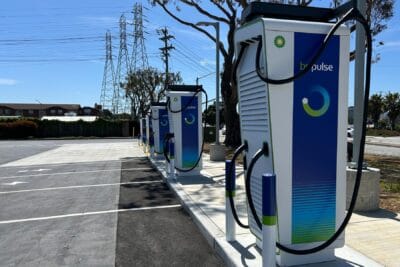U.S. Senate takes another step toward eliminating EV subsidies
However, the Senate’s version differs from the House bill passed in May in a number of key respects, particularly with regard to deadlines, consumer entitlements and exemptions.
The measure is part of a comprehensive tax package being pushed by the Republican majority under President Donald Trump. According to the new bill, the tax credit is set to expire 180 days after the new regulation comes into force. The end date is therefore now dependent on when the bill is voted on and whether and when it actually comes into force.
The Senate has thus set a different time frame than the House of Representatives, which originally planned for the subsidy for new cars to expire by the end of 2026. Vehicles from car manufacturers that have already sold more than 200,000 electric cars were to be excluded from the subsidy from the end of 2025. For consumers and manufacturers, this means that anyone who still wants to benefit from the subsidy must act quickly.
This six-month deadline is practically an ultimatum, according to Rob Stumpf from InsideEVs. The loss of the credit could deter many US buyers from switching to an electric car, not least because of the currently still higher prices compared to combustion engines.
Leasing loophole to be closed immediately
Another major difference is that the so-called leasing loophole, through which car manufacturers were able to claim the credit even for vehicles that were not formally eligible, will be abolished immediately when the law comes into force. This eliminates a previously much-used practice that also indirectly subsidised models with foreign final assembly.
While the House bill contained additional measures such as a special annual levy of $250 on electric cars for road maintenance, the Senate has dispensed with this charge.
A new incentive – but not for everyone
Instead of direct subsidies, the Senate bill relies on indirect relief. In future, certain groups of buyers will be able to claim interest payments on car loans against tax. According to InsideEVs, in the case of a $57,000 loan at 5% interest over 60 months, this regulation could mathematically provide more tax relief than the existing Clean Vehicle Credit. The major disadvantage: this effect does not affect the purchase price, but is spread over years, which is not very attractive for many buyers.
Industry experts are warning that the abolition of the Clean Vehicle Credit could severely impact sales of electric cars. The law could also cause turbulence for manufacturers. Companies such as Tesla or Ford, which rely on electric cars, are likely to feel a short-term slump in demand. At the same time, the reform could become a stumbling block for smaller manufacturers or new entrants, especially as the market is already under pressure due to rising interest rates and supply chain problems.
The issue is also politically divisive: Democrats and environmental organisations are accusing the Republicans of sabotaging the goal of climate neutrality by abolishing the credit. Republicans, on the other hand, see the measure as part of a comprehensive tax reform and argue that state subsidies distort competition.
The law has not yet been finalised, but with the Republican majority, this should only be a matter of time. As soon as the U.S. President signs the law, manufacturers and buyers will only have a few months left to benefit from the existing subsidy.
senate.gov (PDF, page 264-266), insideevs.com





0 Comments